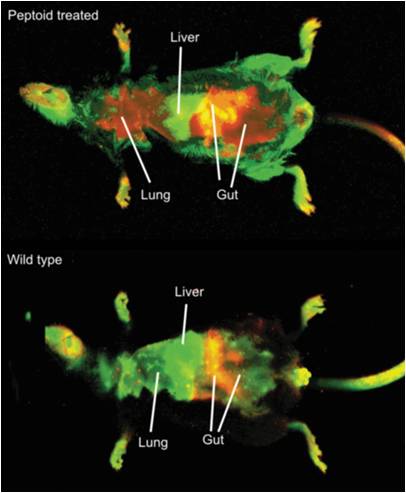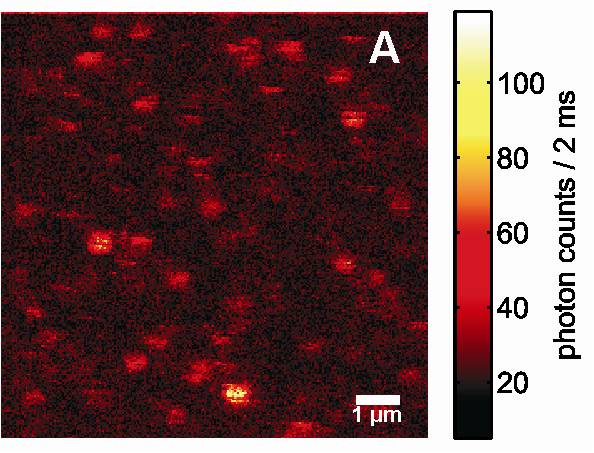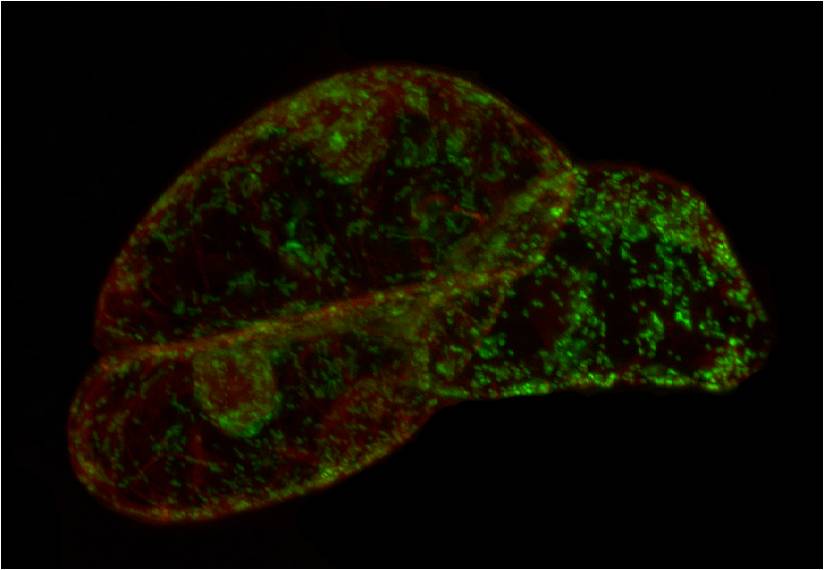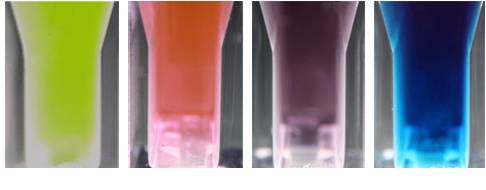E1.1: Novel Carriers for Nano-Structured Material through Membranes
Subproject Leader: Stefan Bräse
Contributing Scientists:
Present: Carmen Cardenal Pac, Daniel Fürniß, Dominik Kölmel, Sidonie Vollrath, Birgit Rudat
Past: Esther Birtalan, Daniel Fritz, Tina Schröder
A Way Into the Cell
Cells are surrounded by the so-called plasma membrane, which not only defines them but strictly regulates the substance transport. Only few substances possess intrinsically cell permeability and some others are incorporated by active transport mechanism. But, depending on the scientific problem or question, it is necessary to bring certain compounds into cells, which would not have been taken up on their own. So their uptake must be mediated by a preferably efficient and likewise gentle method.
Peptoids as Molecular Transporters
In subproject E1.1: Novel Carriers for Nano-Structered Materials through Membranes, the cellular uptake of different substances should be mediated by polycationic peptoids, which can act as molecular transporters. These molecular transporters can overcome the plasma membrane due to a highly positively charged area, which is generated by functional groups like amines [1] or guanidines. The utilized structures are peptoid-based and so very similar to the common peptides (peptidomimetic). The only difference is that their sidechains are formally shifted from the α-carbon atom to the adjacent nitrogen atom. This structural change provides a higher stability against degradation (e.g. proteolysis) and therefore is crucial for the bioavailability.
Applications of Molecular Transporters
The described peptoid structures can deliver several different cargoes, like fluorescence dyes, metal ions or nanoparticles (NPs). Depending on this cargo, the transporters can be used for different applications. Utilizing a high performance dye (from Prof. Balaban) single-molecule tracking of peptoids was possible for the first time [2]. Incorporating two different dyes within the same structure allows performing energy transfer experiments. Doing this, the cleavage of specific positions within the transporter can be observed optically. Therefore a long-term goal is to identify such cleavable positions and using them to release the transported cargo (e.g. a drug) inside the cell. If a suitable complexing ligand is part of the peptoid, metals can be transported too. It is possible to address metal ions (like lanthanides) or even nanoparticles (like Au or TiO2). These can be used as markers (luminescence of some lanthanides, see subproject C1.5: Lanthanide Clusters for Potential Photonic and Magnetic Applications) or as functional cargoes (Auger effect of Au-NP, ROS production of TiO2-NP, see subproject E1.5: Use of Nanoparticles to Study and Manipulate the polarity of Plant Cells).
Organ and Organelle Tracking
In addition the peptoidic structures are screened for organ or organelle specificity, which allows specific manipulation with functional cargoes. The tests are performed on plant cells [3,4], human cervix carcinoma (HeLa) cells [5] or mice as test organism. The specificity can be observed by using fluorescence microscopy or magnetic particles to perform Magnet Resonance Imaging (MRI).
References
|
[1] |
D. Fritz, S. Bräse, Synlett 10, 1544 (2010) |
|
[2] |
B. Rudat, E. Birtalan, I. Thomé, D. K. Kölmel, V. L. Horhoiu, M. D. Wissert, U. Lemmer, H.-J. Eisler, T. S. Balaban, S. Bräse, J. Phys. Chem. B 114, 13473 (2010) |
|
[3] |
K. Eggenberger, T. Schröder, E. Birtalan, S. Bräse, P. Nick, ChemBioChem, 10, 2504 (2009) |
|
[4] |
E. Birtalan, K. Eggenberger, O. Lemke, I. Hebeiss, C. Bednarek, J. Sieber, P. Nick, S. Bräse, U. Schepers, PloS ONE, in press (2011) |
|
[5] |
E. Birtalan, D. Fritz, L. Hammerich, A. Frintrup, F. Hahn, P. Knüfermann, S. Bräse, U. Schepers, Nat. Biotech., in revision (2011) |
List of Publications 2006-2011 as PDF
Subproject Report 2006-2010 as PDF



